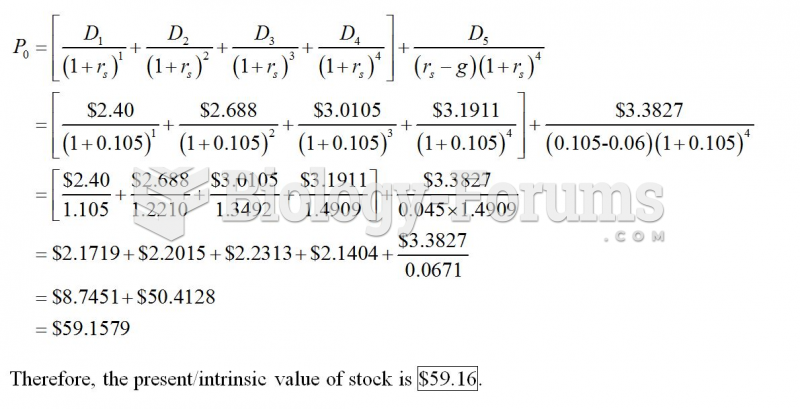Answer to Question 1
A
Answer to Question 2
Purchasing power parity is better at predicting long-term exchange rates (more than 10 years), but accurate forecasts of short-term rates are most beneficial to international managers. Even short-term plans must assume certain things about future economic and political conditions in different countries, including added costs, trade barriers, and investor psychology.
Impact of Added Costs-There are many possible reasons for the failure of PPP to predict exchange rates accurately. For example, PPP assumes no transportation costs. Suppose that the same basket of goods costs 100 in the United States and 950 kroner (150 ) in Norway. Seemingly, one could make a profit through arbitrage by purchasing these goods in the United States and selling them in Norway. However, if it costs another 60 to transport the goods to Norway, the total cost of the goods once they arrive in Norway will be 160. Thus no shipment will occur. Because no arbitrage opportunity exists after transportation costs are added, there will be no leveling of prices between the two markets and the price discrepancy will persist. Thus even if PPP predicts that the Norwegian krone is overvalued, the effect of transportation costs will keep the dollar/krone exchange rate from adjusting. In a world in which transportation costs exist, PPP does not always correctly predict shifts in exchange rates.
Impact of Trade Barriers-PPP also assumes no barriers to international trade. However, such barriers certainly do exist. Governments establish trade barriers for many reasons, including helping domestic companies remain competitive and preserving jobs for their citizens. Referring back to the previous example, suppose the Norwegian government imposes a 60 percent tariff on the 100 basket of imported goods or makes its importation illegal. Because no leveling of prices or exchange-rate adjustment will occur, PPP will fail to predict exchange rates accurately.
Impact of Business Confidence and Psychology-Finally, PPP overlooks the human aspect of exchange ratesthe role of people's confidence and beliefs about a nation's economy and the value of its currency. Many countries gauge confidence in their economies by conducting a business confidence survey. The largest survey of its kind in Japan is called the tankan survey. It gauges business confidence four times each year among 10,000 companies.
Investor confidence in the value of a currency plays an important role in determining its exchange rate. Suppose several currency traders believe that the Indian rupee will increase in value. They will buy Indian rupees at the current price, sell them if the value increases, and earn a profit. However, suppose that all traders share the same belief and all follow the same course of action.
The activity of the traders themselves will be sufficient to push the value of the Indian rupee higher. It does not matter why traders believed the price would increase. As long as enough people act on a similar belief regarding the future value of a currency, its value will change accordingly.
That is why nations try to maintain the confidence of investors, businesspeople, and consumers in their economies. Lost confidence causes companies to put off investing in new products and technologies and to delay the hiring of additional employees. Consumers tend to increase their savings and not increase their debts if they have lost confidence in an economy. These kinds of behaviors act to weaken a nation's currency.







